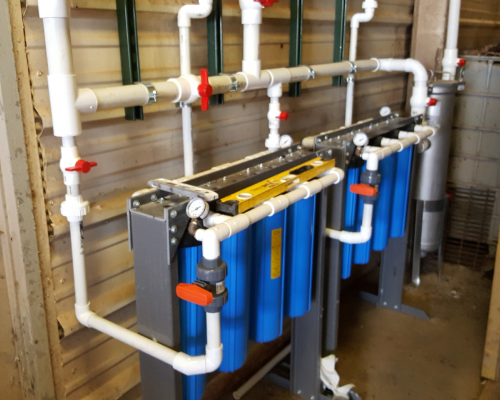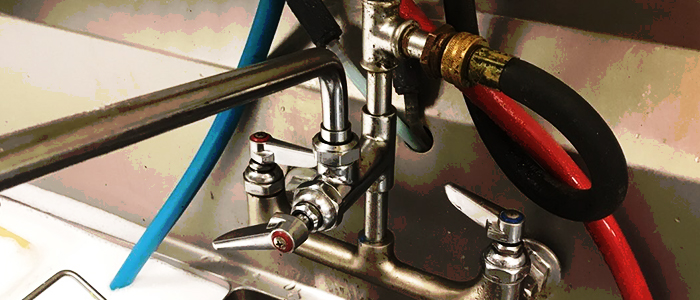Just how do you really feel when it comes to Plumbing Installation 101: All You Need to Know?

Recognizing exactly how your home's plumbing system functions is vital for every home owner. From supplying clean water for alcohol consumption, cooking, and showering to securely removing wastewater, a properly maintained plumbing system is critical for your family's health and wellness and convenience. In this comprehensive guide, we'll check out the detailed network that comprises your home's pipes and deal tips on maintenance, upgrades, and managing usual concerns.
Introduction
Your home's pipes system is greater than simply a network of pipes; it's a complex system that ensures you have accessibility to tidy water and efficient wastewater removal. Understanding its parts and just how they work together can help you avoid expensive repairs and guarantee whatever runs efficiently.
Standard Elements of a Plumbing System
Pipes and Tubes
At the heart of your pipes system are the pipelines and tubes that bring water throughout your home. These can be made from different products such as copper, PVC, or PEX, each with its benefits in regards to toughness and cost-effectiveness.
Fixtures: Sinks, Toilets, Showers, etc.
Fixtures like sinks, toilets, showers, and bathtubs are where water is made use of in your house. Comprehending exactly how these fixtures connect to the plumbing system helps in identifying problems and preparing upgrades.
Shutoffs and Shut-off Factors
Shutoffs manage the flow of water in your plumbing system. Shut-off valves are vital throughout emergencies or when you need to make repair work, allowing you to isolate parts of the system without interrupting water flow to the entire residence.
Water System
Key Water Line
The primary water line links your home to the local water system or a personal well. It's where water enters your home and is distributed to various components.
Water Meter and Stress Regulator
The water meter measures your water usage, while a stress regulatory authority guarantees that water flows at a secure stress throughout your home's plumbing system, protecting against damages to pipelines and fixtures.
Cold Water vs. Hot Water Lines
Understanding the difference between cold water lines, which provide water straight from the primary, and warm water lines, which bring heated water from the water heater, helps in repairing and preparing for upgrades.
Drainage System
Drain Pipes Pipeline and Traps
Drain pipes lug wastewater away from sinks, showers, and toilets to the sewage system or sewage-disposal tank. Traps protect against drain gases from entering your home and also catch debris that can trigger clogs.
Air flow Pipes
Air flow pipes permit air right into the drainage system, stopping suction that could reduce drainage and create traps to vacant. Appropriate air flow is vital for maintaining the stability of your pipes system.
Significance of Correct Water Drainage
Guaranteeing correct drainage stops backups and water damage. Regularly cleaning up drains pipes and maintaining traps can protect against costly repairs and extend the life of your plumbing system.
Water Heating Unit
Sorts Of Hot Water Heater
Hot water heater can be tankless or standard tank-style. Tankless heaters warm water on demand, while storage tanks save heated water for instant usage.
Upgrading Your Plumbing System
Factors for Updating
Updating to water-efficient components or changing old pipelines can improve water top quality, minimize water expenses, and raise the value of your home.
Modern Plumbing Technologies and Their Benefits
Check out modern technologies like smart leak detectors, water-saving commodes, and energy-efficient water heaters that can save money and minimize ecological influence.
Cost Considerations and ROI
Determine the ahead of time prices versus long-term savings when thinking about pipes upgrades. Lots of upgrades pay for themselves through decreased utility expenses and fewer repair services.
Just How Water Heaters Attach to the Plumbing System
Understanding how water heaters connect to both the cold water supply and hot water distribution lines helps in diagnosing problems like not enough warm water or leakages.
Upkeep Tips for Water Heaters
Frequently flushing your water heater to get rid of debris, inspecting the temperature level setups, and evaluating for leakages can expand its lifespan and boost power performance.
Usual Pipes Problems
Leaks and Their Causes
Leaks can occur due to aging pipelines, loosened installations, or high water pressure. Dealing with leaks quickly avoids water damage and mold development.
Obstructions and Clogs
Obstructions in drains pipes and bathrooms are frequently caused by purging non-flushable items or a buildup of grease and hair. Making use of drainpipe screens and being mindful of what drops your drains pipes can avoid obstructions.
Signs of Pipes Troubles to Look For
Low tide stress, slow drains pipes, foul odors, or uncommonly high water costs are indications of prospective plumbing issues that should be resolved without delay.
Pipes Maintenance Tips
Regular Assessments and Checks
Set up yearly pipes examinations to capture issues early. Seek indications of leaks, rust, or mineral buildup in taps and showerheads.
Do It Yourself Upkeep Tasks
Simple jobs like cleansing faucet aerators, looking for bathroom leakages utilizing color tablets, or insulating revealed pipelines in cool climates can protect against major plumbing concerns.
When to Call a Professional Plumber
Know when a plumbing problem requires expert knowledge. Trying complex repair services without proper understanding can bring about more damages and greater repair work prices.
Tips for Decreasing Water Use
Simple routines like dealing with leaks immediately, taking much shorter showers, and running full lots of laundry and meals can preserve water and reduced your utility expenses.
Eco-Friendly Pipes Options
Consider sustainable pipes products like bamboo for flooring, which is durable and environmentally friendly, or recycled glass for kitchen counters.
Emergency situation Preparedness
Actions to Take Throughout a Pipes Emergency situation
Know where your shut-off valves are located and exactly how to turn off the water system in case of a burst pipe or major leakage.
Relevance of Having Emergency Situation Calls Convenient
Keep contact info for regional plumbing professionals or emergency situation services readily available for quick action throughout a pipes situation.
Ecological Influence and Preservation
Water-Saving Components and Devices
Installing low-flow faucets, showerheads, and toilets can considerably minimize water use without sacrificing performance.
DIY Emergency Fixes (When Applicable).
Short-lived repairs like using duct tape to patch a leaking pipe or putting a container under a leaking faucet can reduce damage till a specialist plumbing professional gets here.
Verdict.
Recognizing the makeup of your home's pipes system encourages you to keep it properly, conserving time and money on repair work. By following regular upkeep routines and remaining educated regarding modern pipes modern technologies, you can guarantee your plumbing system runs successfully for several years to find.
Understanding Your Home Plumbing System: A Comprehensive Guide
Plumbing System: The Lifeline of Your Home
At its core, the plumbing system is designed to perform two primary functions: bring fresh water into your home and remove wastewater. The system is a network of pipes, fixtures, and other components that transport water and sewage. Residential plumbing systems include potable water supply lines, drain-waste-vent (DWV) systems, and various plumbing fixtures that make water use in daily tasks possible.
Key Components:
Water Supply: This part of your plumbing system brings municipal water into your home, passing through the main water supply line. It s responsible for supplying all water needs, from drinking to bathing.
Drainage System: It carries waste and water away from your home to the sewer or septic system. This system includes all the piping within your home that leads to external sewage or septic systems.
Vent System: An essential yet often overlooked component, the vent system allows sewer gases to escape and lets air into the drainpipes, ensuring water and waste move correctly through the system.
Fixture: More Than Just Taps and Toilets
Plumbing fixtures are the most interactive parts of the plumbing system, including faucets, showers, toilets, and sinks. Each fixture is connected to the plumbing system and plays a role in either the delivery of freshwater or the disposal of waste and wastewater.
Types of Fixtures:
Faucets and Sinks: Used for washing hands, dishes, and other daily water needs. Toilets: Dispose of human waste through the sewage system. Bathtubs and Showers: Provide bathing facilities, requiring both hot and cold water supply. Water Supply: The Source of Life
The water supply system is a critical component, ensuring that potable water is available throughout your home for various uses, including drinking, cooking, and cleaning. This system consists of pipes that distribute water to different parts of the house, controlled by valves to regulate the water flow.
Types of Plumbing: Materials and Methods
Various types of plumbing systems and materials are used in residential settings, each with its advantages and applications. From copper and PVC pipes for water supply to cast iron and ABS for drainage, the choice of materials can impact the longevity and efficiency of your plumbing system.
https://intownplumbingtx.com/articles/home-plumbing-system-guide/

As a fervent person who reads on The Inner Workings of Your Home's Plumbing, I think sharing that piece of content was really helpful. So long as you liked our blog entry plz don't forget to share it. Many thanks for your time invested reading it.
Book Your Installation